Er was een tijd dat ik schreef voor de internationale cinephile website ‘Taste of Cinema.’ Een website met een gigantisch bereik, waar ik de kans kreeg om mijn film meningen de wereld in te gooien in de vorm van top 10 lijstjes. Nu is het al een hele tijd geleden dat ik de laatste schreef, maar ik kan het niet laten om er een aantal waar ik toendertijd erg tevreden mee was opnieuw te delen. Zie hier in het Engels geschreven een van deze top 10 lijstjes.
De andere twee vind je hier: 10 great fantasy films, 10 great surrealist films.
De andere twee vind je hier: 10 great fantasy films, 10 great surrealist films.
10 Great Spaghetti Westerns
(you’ve probably never seen)

With Spaghetti Westerns we’ll just discuss one of these stylized genres this time around, since each of them deserve their own lists. Excuse us for not including Sergio Leone on this list, but we assume most of you are well familiar with his work, so instead we’ll discuss some lesser known ones. Also apologies for not including something from the legendary Bud Spencer & Terence Hill, but even they felt a little too much on the popular side. With that out of the way, the 10 films that are included in this list are still among the greatest Spaghetti Westerns, or even just Westerns, they’re all due to get some more recognition.
1. Face to Face (1967)
 In Face to Face, Gian Maria Volontè, whom we’ll see once more in this list, portrays history professor Brad fletcher, who is moving to the warm west after his retirement. When he arrives, he’s taken hostage by the infamous bandit Solomon Bennet (Tomás Milián). During his short period of captivity, Fletcher befriends Bennet and at a later moment he joins the gang and as his character gradually takes a different shape, he even becomes the leader.
In Face to Face, Gian Maria Volontè, whom we’ll see once more in this list, portrays history professor Brad fletcher, who is moving to the warm west after his retirement. When he arrives, he’s taken hostage by the infamous bandit Solomon Bennet (Tomás Milián). During his short period of captivity, Fletcher befriends Bennet and at a later moment he joins the gang and as his character gradually takes a different shape, he even becomes the leader.In this list we’re bound to end up talking about Sergio Leone’s films at least once, so let’s get it out of the way with it now. Face to Face is a Zapata western (Spaghetti Western set in Mexico) directed by another talented Sergio; Sergio Sollima, often named together with Leone and Sergio Corbucci as ‘the Sergios,’ the three best Spaghetti Western directors that were. Now bear with me here, the film is co-written by yet another Sergio; Sergio Donati, co-writer of a number of Leone’s films as well as Sollima’s more well-known western The Big Gundown. With this talent, a stacked cast, and the brilliant Ennio Morricone score (like he did with plenty more films in this list), it’s a miracle Face to Face isn’t more well-known.
2. The Grand Duel (1972)
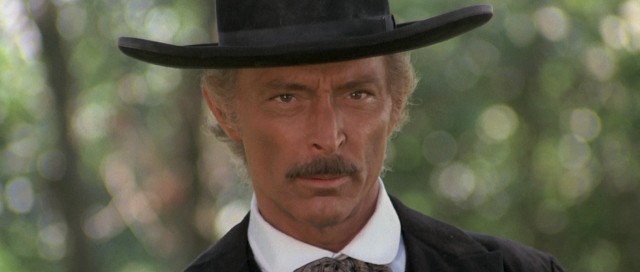 One of the Spaghetti Western’s biggest stars was without a doubt Lee Van Cleef. Especially when it comes to American actors, he’s on top as he’s often named in one breath with both Clint Eastwood and Charles Bronson. Van Cleef rose to stardom after playing in… we have to name drop him again… Sergio Leone’s ‘For a Few Dollars More.’ Whilst earlier just being type cast as villain, this marked a change in his career resulting in many starring roles in Spaghetti Westerns. He’s especially memorable in The Big Gundown and Death Rides a Horse, both not included in this list, but his role in the Grand Duel and his role in Day of Anger (also on this list) are ones to remember just as well.
One of the Spaghetti Western’s biggest stars was without a doubt Lee Van Cleef. Especially when it comes to American actors, he’s on top as he’s often named in one breath with both Clint Eastwood and Charles Bronson. Van Cleef rose to stardom after playing in… we have to name drop him again… Sergio Leone’s ‘For a Few Dollars More.’ Whilst earlier just being type cast as villain, this marked a change in his career resulting in many starring roles in Spaghetti Westerns. He’s especially memorable in The Big Gundown and Death Rides a Horse, both not included in this list, but his role in the Grand Duel and his role in Day of Anger (also on this list) are ones to remember just as well.Van Cleef plays an ex-sheriff, Clayton, who is set on a mission to help clear a man’s name. Philipp Wermeer is framed for the murder of a figure known as ‘The Patriarch’ and know he’s the target of bounty hunters sent by The Patriarch’s three sons. With bounty-hunters on their heels, Wermeer and Clayton travel to the town where the brothers are located to confront them and prove Vermeer his innocence.
Besides The Grand Duel being Van Cleef’s time to shine, it’s worth noting the other talent behind the film. Although it was Giancarlo Santi’s directorial debut, he was already a highly regarded filmmaker as he was among other things the second unit director on some of Leone’s films. Most noteworthy though, is Ernest Gastaldi who wrote the stellar script. Gastaldi has got to be one of the greatest screenwriters of his time and place, the extravagant era of Italian cinema.
3. Cut-Throats Nine (1972)
 A wagon transporting a group of convicts is being escorted by a cavalry troop through the mountains to prison. When a gang of bandits attacks the caravan. Only a sergeant, his daughter, and seven brutal, murderous prisoners survive. With the bandits still in pursuit and with no wagon or horses, the sergeant must escort the prisoners to prison by himself, while also protecting his daughter. If that isn’t brutal enough, he also is trying to find out which of the prisoners sadistically murdered his wife.
A wagon transporting a group of convicts is being escorted by a cavalry troop through the mountains to prison. When a gang of bandits attacks the caravan. Only a sergeant, his daughter, and seven brutal, murderous prisoners survive. With the bandits still in pursuit and with no wagon or horses, the sergeant must escort the prisoners to prison by himself, while also protecting his daughter. If that isn’t brutal enough, he also is trying to find out which of the prisoners sadistically murdered his wife.“Possibly the most violent Euro western ever made.” A tagline that sure isn’t far off from the truth. Cut-Throats Nine has moments of brutal violence, so much that’s sometimes considered to be a horror film. It’s a genre-blending film that might not turn the stomach of avid horror-fans, but any regular western fan will come out surprised. Other than being brutal, the film has a contrast of beauty, through the endless shots of beautiful mountain-scenery. The Spanish Joaquín Luis Romero Marchent directed several Spaghetti Westerns, but this one is in its own league.
4. Four of the Apocalypse (1975)
 This crazy western follows the swindler Stubby, drunkard Clem, a prostitute known as Bunny, and the mentally disturbed ‘Bud’ as they escape prison and embark on adventure in Utah. Their time as free people isn’t much better as imprisonment, as they are haunted by a psychopathic Mexican bandit named Chaco. As they wander through the badlands they’re just out to survive, but the world has other plans for them.
This crazy western follows the swindler Stubby, drunkard Clem, a prostitute known as Bunny, and the mentally disturbed ‘Bud’ as they escape prison and embark on adventure in Utah. Their time as free people isn’t much better as imprisonment, as they are haunted by a psychopathic Mexican bandit named Chaco. As they wander through the badlands they’re just out to survive, but the world has other plans for them.Lucio Fulci is probably most known for his Giallo films, but as many Italian directors from the era, he started out with Spaghetti Westerns. Before he made any Giallos, he came onto the scene with his western called Massacre Time. After directing two Giallos, including arguably his best ‘Don’t Torture a Duckling,’ he took a break from them and went back to make his most promising western ‘Four of the Apocalypse.’ In true Fulci fashion, it is gritty, nasty, and quite brutal. There’s not much of the wide scope landscape shots that we’re used to from westerns, but instead he follows these four unlikely protagonist in something that almost feels more like a character study than anything else. It’s a very refreshing perspective for the genre and yet another great entry in Fulci’s filmography.
5. Django Kill... If You Live, Shoot! (1967)
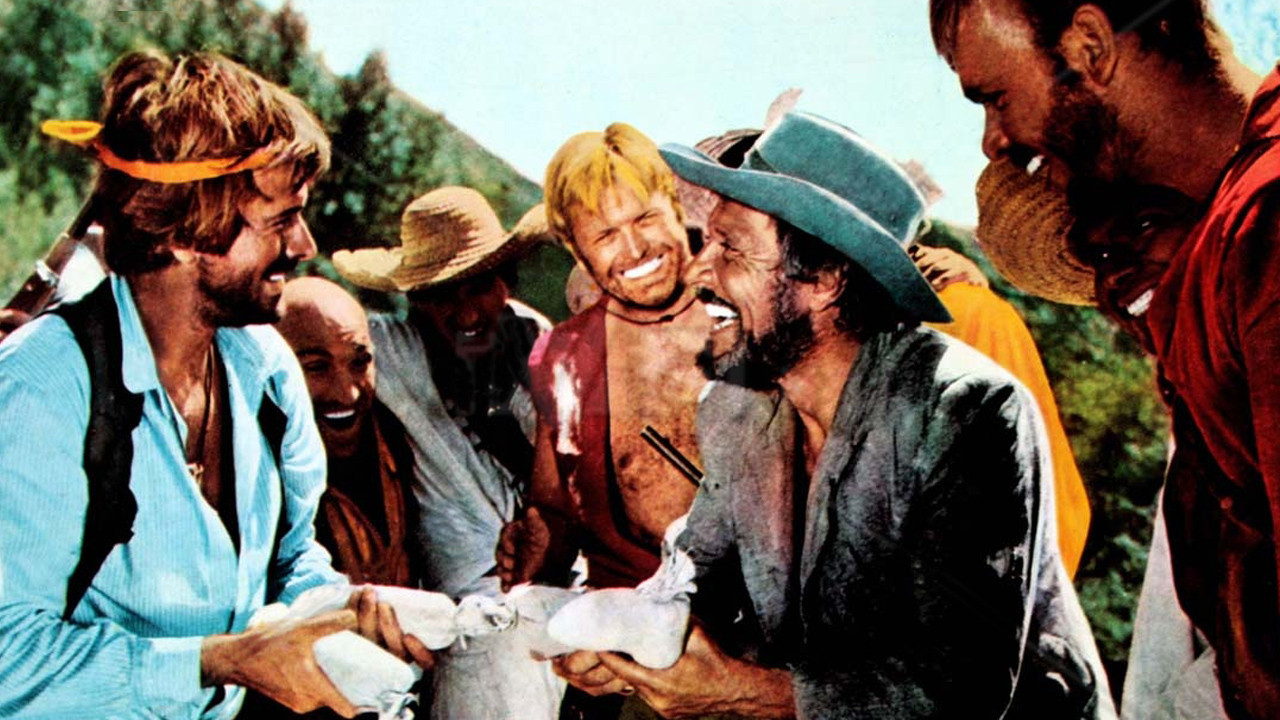 Like Cut-Throats Nine, this film is as well described as the most brutally violent spaghetti western. Which one is the true winner is hard to say, but again we understand the sentiment. Besides being described as violent, it also has the honor of being called an Acid Western after that term was coined in a review of the later western El Topo. It’s a western with a journey towards death instead of the usual journey towards liberation. With it comes of course the almost surreal-esque editing and violence that could be described as an acid trip.
Like Cut-Throats Nine, this film is as well described as the most brutally violent spaghetti western. Which one is the true winner is hard to say, but again we understand the sentiment. Besides being described as violent, it also has the honor of being called an Acid Western after that term was coined in a review of the later western El Topo. It’s a western with a journey towards death instead of the usual journey towards liberation. With it comes of course the almost surreal-esque editing and violence that could be described as an acid trip.Django Kill’s protagonist is not Django, but instead is called ‘the stranger’ since Django Kill has nothing to do with the 1966 film Django. The international title for the movie has Django in it solely to profit from the Franco Nero film. So not Django, but the stranger (played by Tomás Milián who we already saw in two earlier entries of this list) is our unlucky star here, crawling out of death in the first scene. The stranger and his Mexican companions are left for dead by the American part of their gang after a gold heist. Now, the stranger wants the gold back and more, so he’s out for vengeance.
6. Navajo Joe (1966)
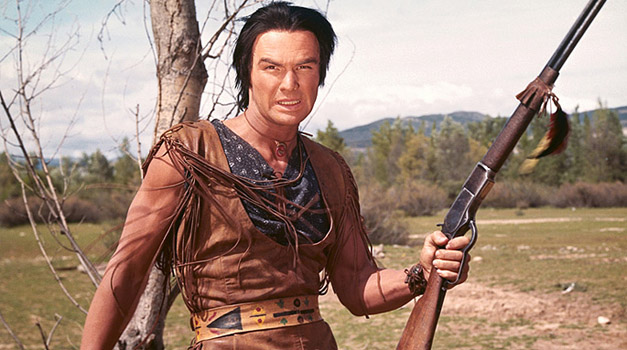 We again go to a film from one of the three Sergios, this time the brilliant Sergio Corbucci. Corbucci is probably best known for his film Django, but besides this he made the arguably better film The Great Silence starring Klaus Kinski, and of course plenty more amazing westerns including The Mercenary and Compañeros. Navajo Joe is somewhat of a lesser known of his westerns, but it has no right to be left behind.
We again go to a film from one of the three Sergios, this time the brilliant Sergio Corbucci. Corbucci is probably best known for his film Django, but besides this he made the arguably better film The Great Silence starring Klaus Kinski, and of course plenty more amazing westerns including The Mercenary and Compañeros. Navajo Joe is somewhat of a lesser known of his westerns, but it has no right to be left behind.With a great antagonist role for the legend Aldo Sambrell, a score from the one and only Ennio Morricone, and a killer theme song that will guaranteed be stuck in your head for days, Navajo Joe is as good as any of Corbucci’s westerns. The one thing that’s questionable is the starring role for Burt Reynolds as a native American Navajo tribe (Reynolds has heritage in the native American Cherokee tribe himself). Reynolds got onto the project through a misunderstanding, so he wasn’t keen on playing the part and with it came that he didn’t get along with Corbucci, so it doesn’t make for the best on-screen chemistry, although it’s nothing too bad.
Reynolds plays the titular character of Navajo Joe, whose tribe has been massacred and scalped by the gang of Vee Duncan (Aldo Sambrell), who sells the scalps for a dollar each. As the sole survivor, Joe is of course out for revenge so he’ll do anything to track down Duncan and his gang to get it. While Duncan and his gang are long onto their next scheme for money, already forgotten about the tribe, Joe slowly closes in on them, thirsty for blood.
7. Keoma (1976)
 Yet another story centering a native-American, this time around starring the great Franco Nero as half-breed Keoma. After serving in the Civil War, Keome returns to his hometown only to find out it’s now under the control of a gang led by a vicious man named Caldwell. Meeting his father and his friend George (Woody Strode), he learns of the horrors Caldwell’s gang puts the town folk through and worst of all, he learns his three half-brothers have joined the gang and they aren’t keen on Keoma’s return.
Yet another story centering a native-American, this time around starring the great Franco Nero as half-breed Keoma. After serving in the Civil War, Keome returns to his hometown only to find out it’s now under the control of a gang led by a vicious man named Caldwell. Meeting his father and his friend George (Woody Strode), he learns of the horrors Caldwell’s gang puts the town folk through and worst of all, he learns his three half-brothers have joined the gang and they aren’t keen on Keoma’s return.Keoma is a clear example of the new wave of Spaghetti Westerns, most notably through its theme including the fight against racism. Keoma’s best friend George, played by the amazing Woody Strode, is an ex-slave now a free man and the common enemy is the gang of racist confederates. Director Enzo G. Castellari seems to make this a theme in his films, if you consider his most popular work is the original ‘The Inglorious Bastards.’ Another tell of it being part of the new wave is the cinematic techniques Castellari incorporated in the film, most notably the slow-motion shots, which make for some great action sequences.
With already a lot to love thanks to this new take on Spaghetti Westerns, it’s a treat that with it we get Franco Nero in the mix in one of his best roles to date. To top it off, we don’t have a Morricone soundtrack, but a unique and most welcome vocal soundtrack, that also adds to the, for its time, modern approach that the film takes.
8. Red Sun (1971)
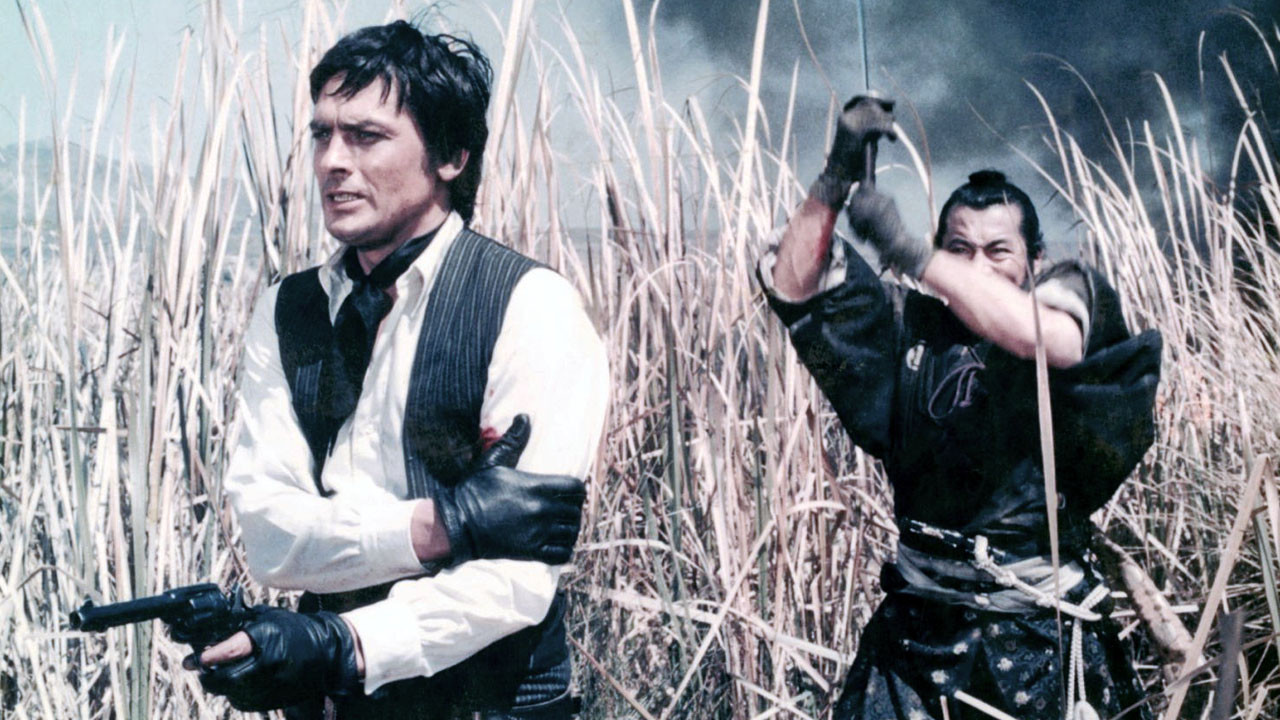 It’s baffling that a film like Red Sun had to end up on this list, since it has all the ingredient to make a classic. Maybe it was a little too ahead of its time when it decided to blend some of cinema’s biggest stars around the world. Terence Young gets together his James Bond collaborator Ursula Andress, American Spaghetti Western star Charles Bronson, and French powerhouse Alain Delon. But if that wouldn’t be enough, he also gets a hold of two Japanese stars in Hiroshi Tanaka and probably most notably Toshiro Mifune.
It’s baffling that a film like Red Sun had to end up on this list, since it has all the ingredient to make a classic. Maybe it was a little too ahead of its time when it decided to blend some of cinema’s biggest stars around the world. Terence Young gets together his James Bond collaborator Ursula Andress, American Spaghetti Western star Charles Bronson, and French powerhouse Alain Delon. But if that wouldn’t be enough, he also gets a hold of two Japanese stars in Hiroshi Tanaka and probably most notably Toshiro Mifune.All these stars come together in the midst of a train robbery. The Japanese ambassador travels through the wild west by train, carrying a Japanese sword as a present for the US president. When the train gets hold up by a gang of outlaws that want to rob the train’s gold shipment, the sword gets stolen as well. The bodyguard of the ambassador will now have to retrieve the stolen sword. He doesn’t do this alone, as he gets unwanted help from one of the gang’s leaders who was betrayed and left behind by his friends.
Jackie Chan is supposedly a fan of Red Sun, since he copied much of the film in Shanghai Noon, so if you’re curious to see the original source material, do give Red Sun a watch. And talking about Jackie Chan, we can’t help but give a shout out to Sammo Hung’s western Millionaires’ Express.
9. A Bullet for the General (1966)
 Another Zapata western that would be a sin to exclude. During the Mexican revolution, bandit El Chucho is gathering, or stealing, arms and ammunition from all the places his gang passes. This in support of the revolutionary leader Elías, who is growing an army to overthrow the government. When Chucho attacks a government supply train, he gets the unexpected help from American gringo Bill Tate. Tate decides to ride with the gang and soon becomes friends with Chuco. Over time Tate proves himself to be an indispensable asset to the gang, but little do they know he has a double agenda.
Another Zapata western that would be a sin to exclude. During the Mexican revolution, bandit El Chucho is gathering, or stealing, arms and ammunition from all the places his gang passes. This in support of the revolutionary leader Elías, who is growing an army to overthrow the government. When Chucho attacks a government supply train, he gets the unexpected help from American gringo Bill Tate. Tate decides to ride with the gang and soon becomes friends with Chuco. Over time Tate proves himself to be an indispensable asset to the gang, but little do they know he has a double agenda.We’ve already seen that Italian Westerns attract more than just Italian stars and A Bullet for the General proves this again as German legend Klaus Kinski makes an appearance. Kinski together with Lou Castel and established western stars Gian Maria Volontè and Aldo Sambrell who we both discussed already, makes this for another film packed with acting talent. We’ve also got some more writing talent, which seems a recurring theme in these westerns as well, with Franco Solinas (The Battle of Algiers, State of Siege) being a co-writer. This might even be the best written film on this list, so it’s due for some more recognition.
10. Day of Anger (1967)
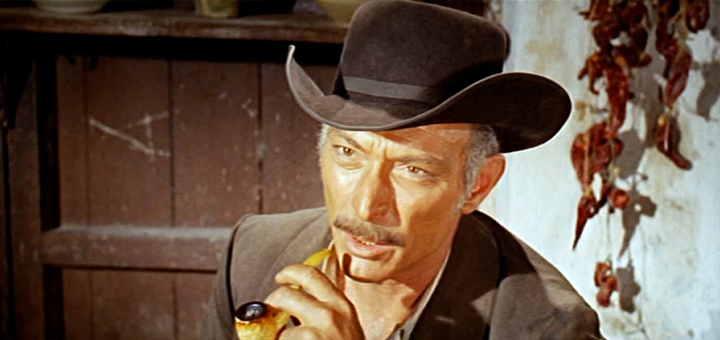 What better way to end this list than including another Lee van Cleef flick? This time not as the hero, but as the mentor for the younger gunslinger Scott (Giuliano Gemma). In the town of Clifton, a young outcast and orphan, Scott, does all the dirty work. From cleaning the saloon to sweeping the streets. When one day Frank Talby (van Cleef) rides into town and by chance gets to show off his skills as a gunslinger, Scott is eager to become his student. Little by little Scott comes to learn more about the art of gunfighting and maybe he even raises above the skills of his master. During his time with Talby, Scott not only learns to handle a gun, but slowly he comes to learn more about his own past.
What better way to end this list than including another Lee van Cleef flick? This time not as the hero, but as the mentor for the younger gunslinger Scott (Giuliano Gemma). In the town of Clifton, a young outcast and orphan, Scott, does all the dirty work. From cleaning the saloon to sweeping the streets. When one day Frank Talby (van Cleef) rides into town and by chance gets to show off his skills as a gunslinger, Scott is eager to become his student. Little by little Scott comes to learn more about the art of gunfighting and maybe he even raises above the skills of his master. During his time with Talby, Scott not only learns to handle a gun, but slowly he comes to learn more about his own past.With again a screenplay co-written by Ernest Gastaldi, Day of Anger is assured to be another plot-driven western. It’s a film that relies on character-building more than on the shooting action that you would expect from a film about a gunslinger, but the character-driven plot is what makes this one special. Van Cleef and Gemma play off each other perfectly and throughout the plot you come to love them both. To top it all off, Day of Anger has the lovely music of another master composer in Riz Ortolani, so surely there’s a lot to love here.